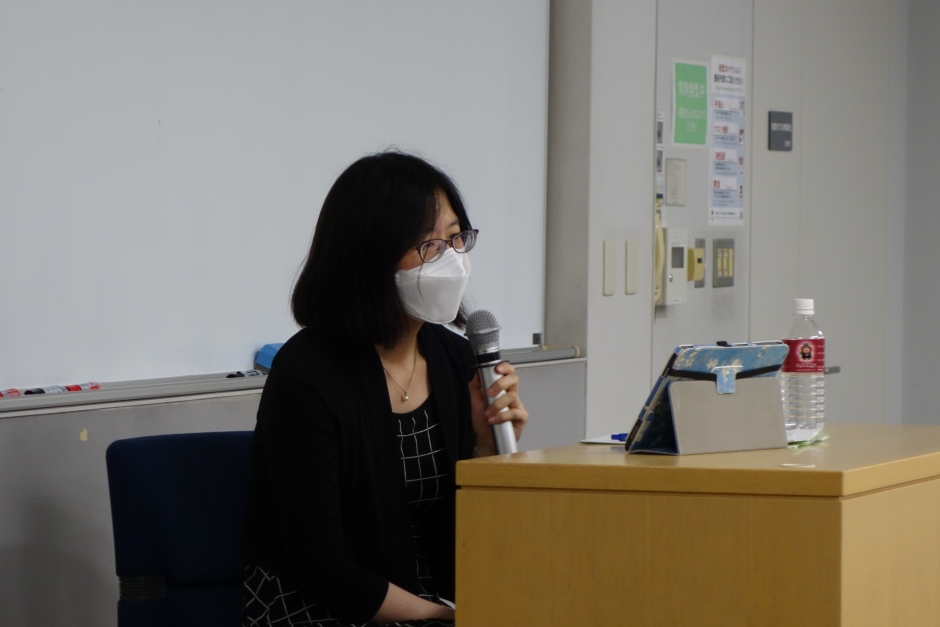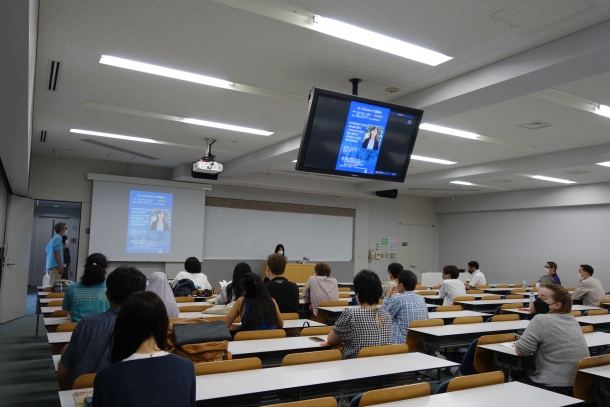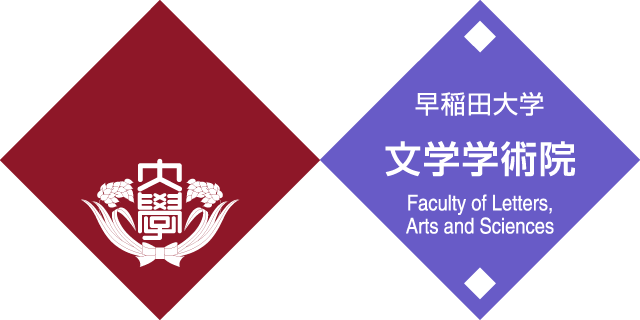- News
- Event Report: “Intersecting Diasporic Literatures: On Jini’s Puzzle and Pachinko” by Dr. Christina Yi (University of British Columbia)
Event Report: “Intersecting Diasporic Literatures: On Jini’s Puzzle and Pachinko” by Dr. Christina Yi (University of British Columbia)

- Posted
- 2022年9月22日(木)
The event “Intersecting Diasporic Literatures: On Jini’s Puzzle and Pachinko” by Dr. Christina Yi (The University of British Columbia) was organized and held by the Global Japanese Studies Model Unit at Waseda University. The event was conducted in person at Waseda’s Toyama Campus, and saw 22 attendees, including undergraduate and graduate students, and members of the general public.

Professor Yi’s lecture proposed to rethink the global configurations of power that become visible once one pays attention to the intersections of narratives of diaspora that are normally told separately from each other, by reading Ch’oe Sil’s Jini’s Puzzle (Jini no pazuru, 2016) alongside Min Jin Lee’s Pachinko (2017), and analyzing the translations and visual-media adaptations of both works.
When one translates into Japanese the apparently-straightforward word “Korea”/“Korean” it is necessary to decide between several terms with various connotations. The word “Chōsen”「朝鮮」, used in the colonial period, and the post-war terms “Kankoku” 「韓国」 and “Kita-Chōsen” 「北朝鮮」 mean different things. It is also not the same to describe a person as a “Chōsenjin”「朝鮮人」, “Kankokujin” 「韓国人」, “Chōsen-seki” 「朝鮮籍」or to use a katakana transcription of the English word “Korean”「コリアン」. These differences should not be understood as a simple question of equivalencies in translation. They point to the necessity of considering the history of Imperialism and the Cold War, which has been excised from public memory both in Japan and in the USA.
Jini’s Puzzle, for instance, deals with North Korea only as an unknowable space that the protagonist must reject, in order to develop her personal journey of self-discovery in the USA. Hawai’i plays there a particular role as a space where the main character has the hardest time fitting in. She is treated as a tourist by the locals, and exoticized as a local by the tourists. During her time in Oregon, on the other hand, her race is never problematized. It might seem paradoxical that she would feel less comfortable in a state with a substantial Asian-American population, but Professor Yi interpreted that fact as a sign that foregrounded racial relations in Hawai’i bring to light by contrast the naturalized “whiteness” that underlies the myth of American multi-culturalism.
Pachinko has also been praised in the US as a valuable example of “immigrant literature.” That reading of the novel, however, separates the content of the novel from the historical experiences of those who actually experienced colonialism. Professor Yi stressed that her objective in pointing this out was not to criticize it as a “misreading,” but to question the structural conditions that turn the “Western” into a “universal message,” and the “non-Western” as “limited experience.” The question of whose experiences are considered “transparent” and “translatable” is always a historical process that plays out in an unequal field of power relations.
Event Overview
- Date and time: July 21, 2022, 16:30 – 18:00 (JST)
- Language: English
- Lecturer: Dr. Christina Yi (Associate Professor, The University of British Columbia)
- Venue: Room 581, Building 36, Toyama Campus, Waseda University.
- Participation is free.
- Tags
- Event Reports
